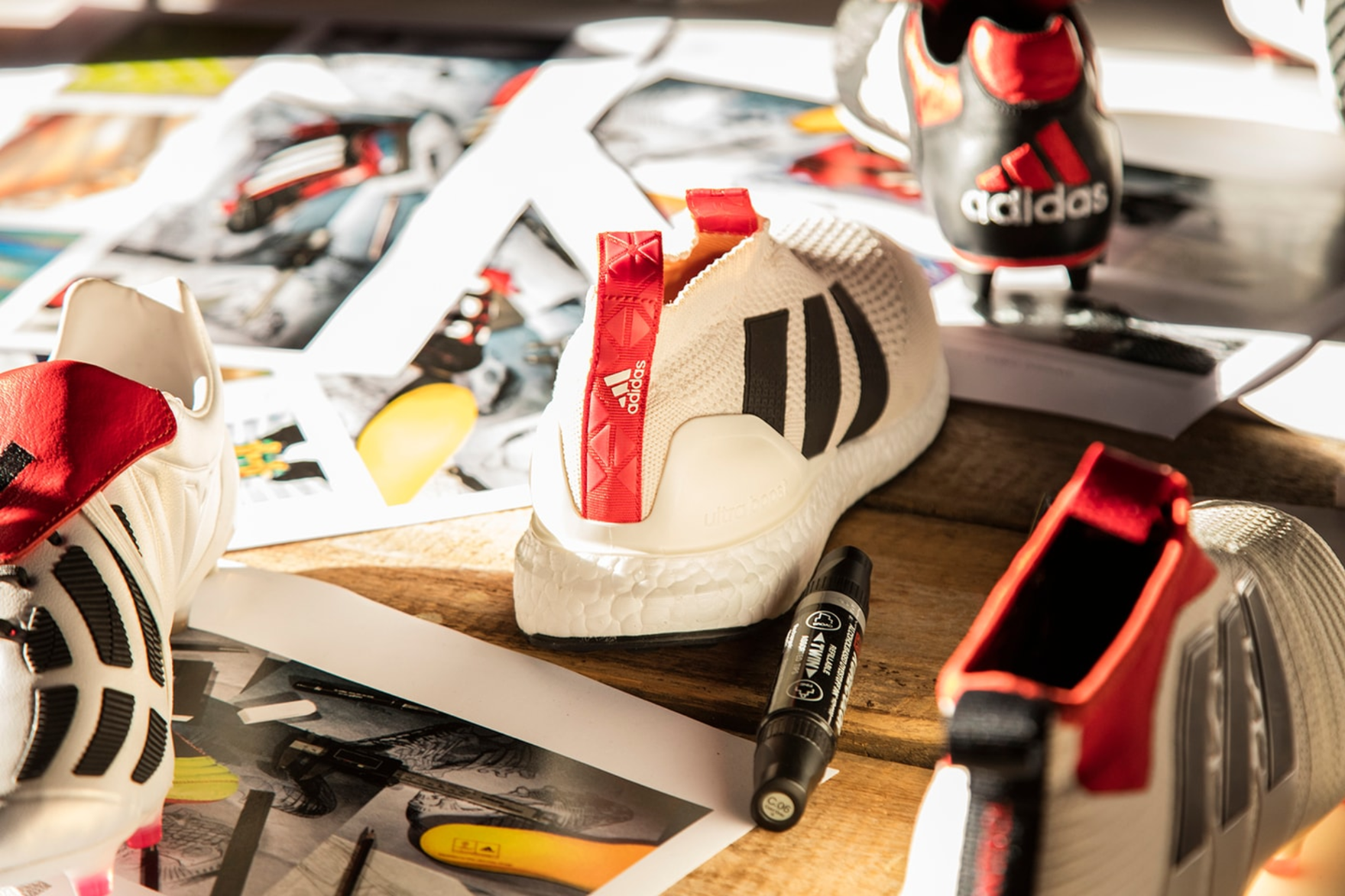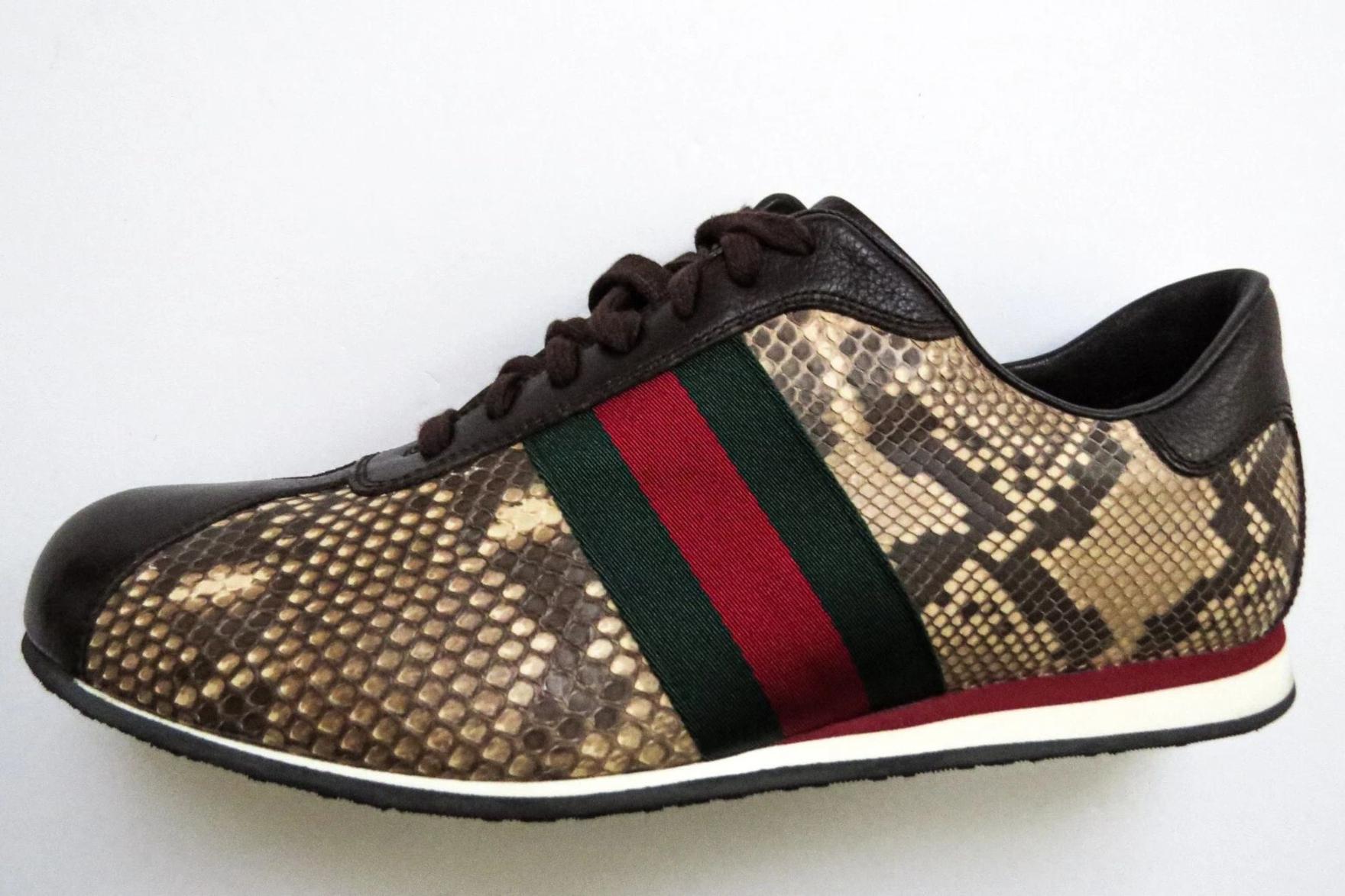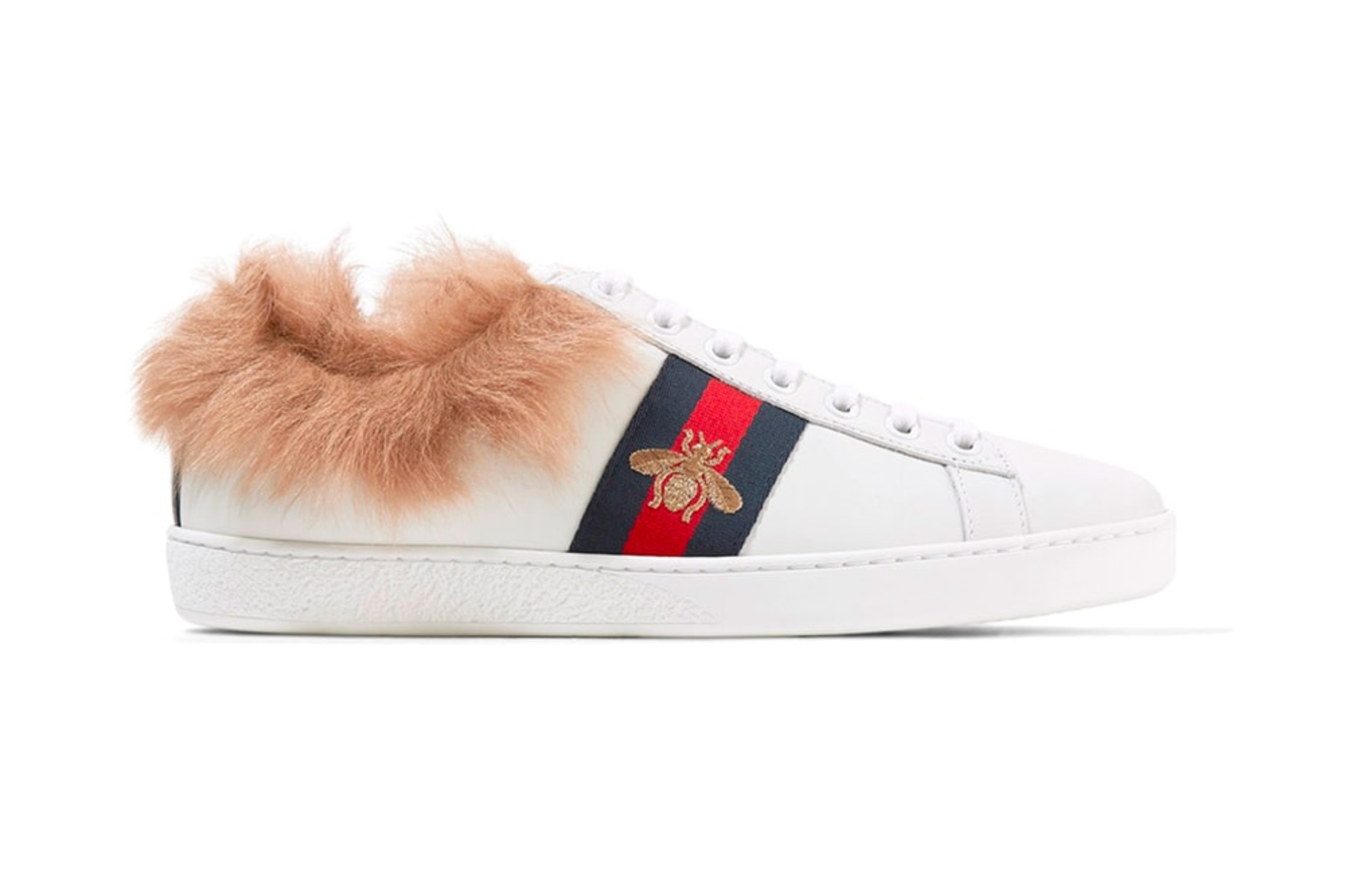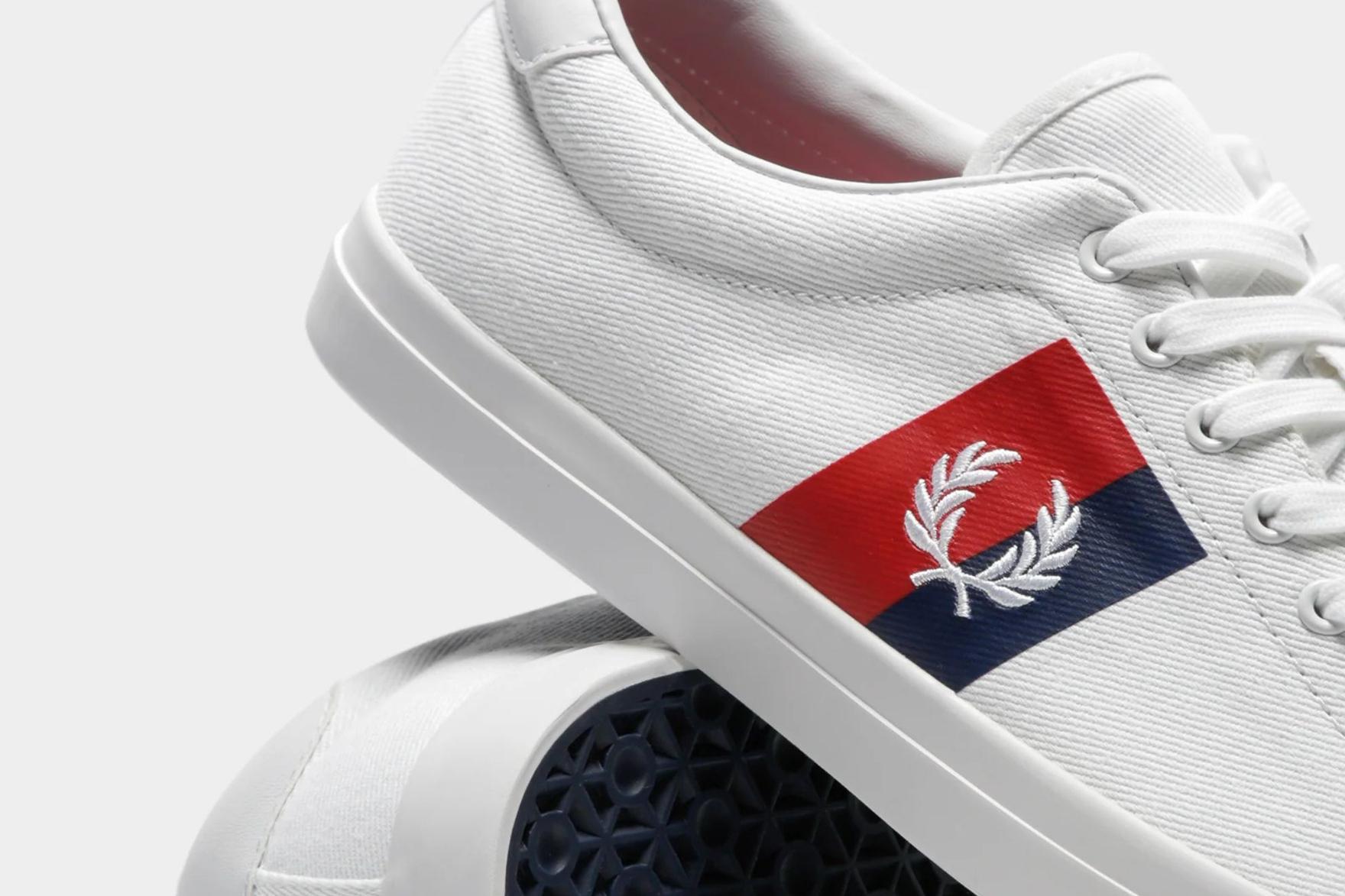Material Matters: Sneaker Tech That Got the Axe
Unless you’re stitching your own coat of mini Dalmatians, the questionable ethics of garment production has likely floated across your dome – and just like clothing, the footwear industry is affected by shifts in accepted methods of manufacture. For all the focus on silhouettes and hype, sneaker history has also been shaped by materials… some more controversial than others. From animal skins and chemical-laced plastics to questionable dyes and novelty fabrics, the materials used to build shoes have often sparked as much debate as they have admiration.
Initially framed as innovation or luxury (fur-trimmed uppers, phthalate-packed prints, kangaroo leather linings), many of these elements have aged poorly and since been banned, discontinued or quietly phased out. And though the industry rarely looks back, these moments tell a bigger story – one where optics matter just as much as function, and where the line between bold design and bad press can quickly blur.
As the materials game moved from from lab-made synthetics to ethically sourced fabrics, it’s worth remembering how messy, experimental, and charged it’s been along the way.

Kangaroo Leather
It’s true that kangaroo leather once ruled the cleat game. Its lightness, strength and close-to-ball feel made it a favourite across several decades., , , and were all built with the material and worn by icons like Ronaldinho, Del Piero and Totti. But in recent years, that ‘performance premium’ has been catching heat. Animal welfare groups are speaking up about Australia’s commercial hunts, calling them out as brutal, barely regulated and way too big.
In 2024, the backlash was no longer niche. and fully phased out kangaroo leather, replacing it with high-tech synthetics like FlyTouch Plus and K-Better. pledged to follow suit before the year’s end, while adidas stopped sourcing the material in 2024 with Even traditionally leather-heavy brands like and have
Legally, California doubled down on its long-time ban and the US Senate brought in the . Oregon and Connecticut followed with similar moves. It’s not just about performance or price anymore: the focus has shifted to how things look, feel and hold up ethically. What used to be seen as top-tier now feels over the top, and no matter how premium the leather is, public opinion has made it a harder pitch.

Exotic Animal Skins (Snakeskin, Croc, Ostrich)
Exotic animal skins have a long association with luxury and exclusivity in the sneaker industry. Brands like and have incorporated crocodile and python skins into limited-edition sneakers, while Nike experimented with embossed faux croc leather on its models. However, growing concerns about animal welfare and illegal trafficking have pushed the industry toward change. Global rules like , first established in 1975, keep tight control on the trade of protected exotic skins – so brands have to play by the book.
Lately, with more eyes on the industry and tougher crackdowns, getting hold of these materials has become way trickier and way more controversial. Some brands have even voluntarily phased out genuine exotic skins, turning instead to high-quality synthetics that mimic the look and feel without the grilling.

Real Shearling and Fur
Britney’s meltdown. Paris and Nicole in every tabloid. Cribs reruns showing off spinning rims and sneaker closets. The 2000s were mad, and sneakers followed suit. Out came the rabbit fur, snakeskin textures and wild, cartoon-level builds. Nike’s Premium 'Horse Pack' dropped in 2007 with genuine horsehair, while line (2008–2013) featured faux tails and plush uppers that . Some brands even flirted with calf-hair and pony-hair textures – terms that often masked real animal use. But the same cultural current that elevated these materials soon turned its back on them.
By the 2010s, the fur conversation was moving far beyond the runway. While fur-trimmed remained mainstream, heat from consumers – especially Gen Z and younger Millennials – grew louder. The tipping point came when fashion heavyweights announced plans to go fur free, including (2018), (2020), and Canada Goose (2022). Sneaker brands, more attuned than ever to optics, took note and shifted.
Real fur, especially from rabbit, fox and mink , was quietly switched out. Even shearling-lined sneakers shifted to synthetics. As cultural capital moved toward ethics, the idea of animal-derived ‘luxury’ felt increasingly outdated. Today, what once crooned ‘high-end’ now screams ‘out of touch’. Innovation didn’t stop – and offer alternatives – but ultimately, the fur era ended not with a scandal but a collective shrug and move-on.
PVC
The PVC ban shook up sneaker culture in unexpected ways. Once a staple material, PVC’s cheap, glossy appeal gave way under new laws like the and , which cracked down on harmful substances. Early replacements struggled: the Nike Air Max 2010’s iconic translucent panels couldn’t be easily replicated, making certain vintage models more sought-after by collectors.
But the industry bounced back with fresh approaches. Brands embraced alternatives like TPU and plant-based synthetics, turning sustainability into a creative asset. Releases like adidas’ and highlight how eco-friendly materials gained cult status. Reflecting a wider cultural change, the PVC ban wasn’t a meaningless restriction, but a catalyst for redefining what matters in sneaker design and culture today.
Sulfur Hexafluoride (SF₆) Air Units
Sulfur Hexafluoride (SF₆) is one of those wild chemical stories tucked deep inside sneaker tech history. Used by Nike to fill certain in the early 2000s, SF₆ is an inert, non-toxic gas known for its incredible density and stability. In the context of the Swoosh’s Air units, these qualities meant improved cushioning and durability. SF₆-filled Air bubbles were heavier than standard nitrogen, which at first seemed like a way to optimise the feel and lifespan of the iconic Air sole.
However, SF₆ is also an extremely potent greenhouse gas – roughly 23,500 times more impactful than CO₂ in terms of global warming potential. Its environmental footprint is disproportionately large even in tiny quantities. The irony? Those tiny pockets of SF₆ in trainers barely scratched the surface of polluting power compared to the volumes that large-scale industrial operations were pumping out – but they still said a lot about how little the industry cared about doing things sustainably.
Nike’s early experiments with SF₆-filled Air units showcased both ambition and blind spots. While the tech aimed to push performance boundaries – and still has ‘heads talking today – the result was a disregard of long-term environmental consequences. Eventually, with rising awareness about greenhouse gases and the arrival of stricter environmental regulations worldwide, SF₆ use in sneaker manufacturing was phased out. Today, Nike have gone all-in with their Big Bubble releases, a consciously redesigned alternative that has seen the return of in commemoration of the model’s 35th anniversary.

Phthalates and Plastisol Prints
As sneaker culture exploded in the late 90s and early 2000s, so did the demand for bold, eye-catching designs. Enter phthalates and plastisol prints: chemical-heavy processes that allowed for bright, glossy graphics and flexible designs on uppers. Plastisol inks – borrowed from traditional screen-printing – gave trainers a vibrant, almost plastic-like finish that popped off on everything from Air Maxes to Dunks.
Meanwhile, phthalates – used as plasticisers to keep soles and prints flexible – raised alarms for their links to health issues, including hormone disruption. This damning scientific research led to increased regulation, notably the in 2006 and the , both targeting phthalates in consumer goods. These regulations forced brands to rethink their use of such chemicals. While plastisol prints still appear in limited editions, much cleaner and safer alternatives now dominate, reflecting the ongoing balance between design and environmental responsibility.
Want more deep dives into materials that matter? Check out our features on and
